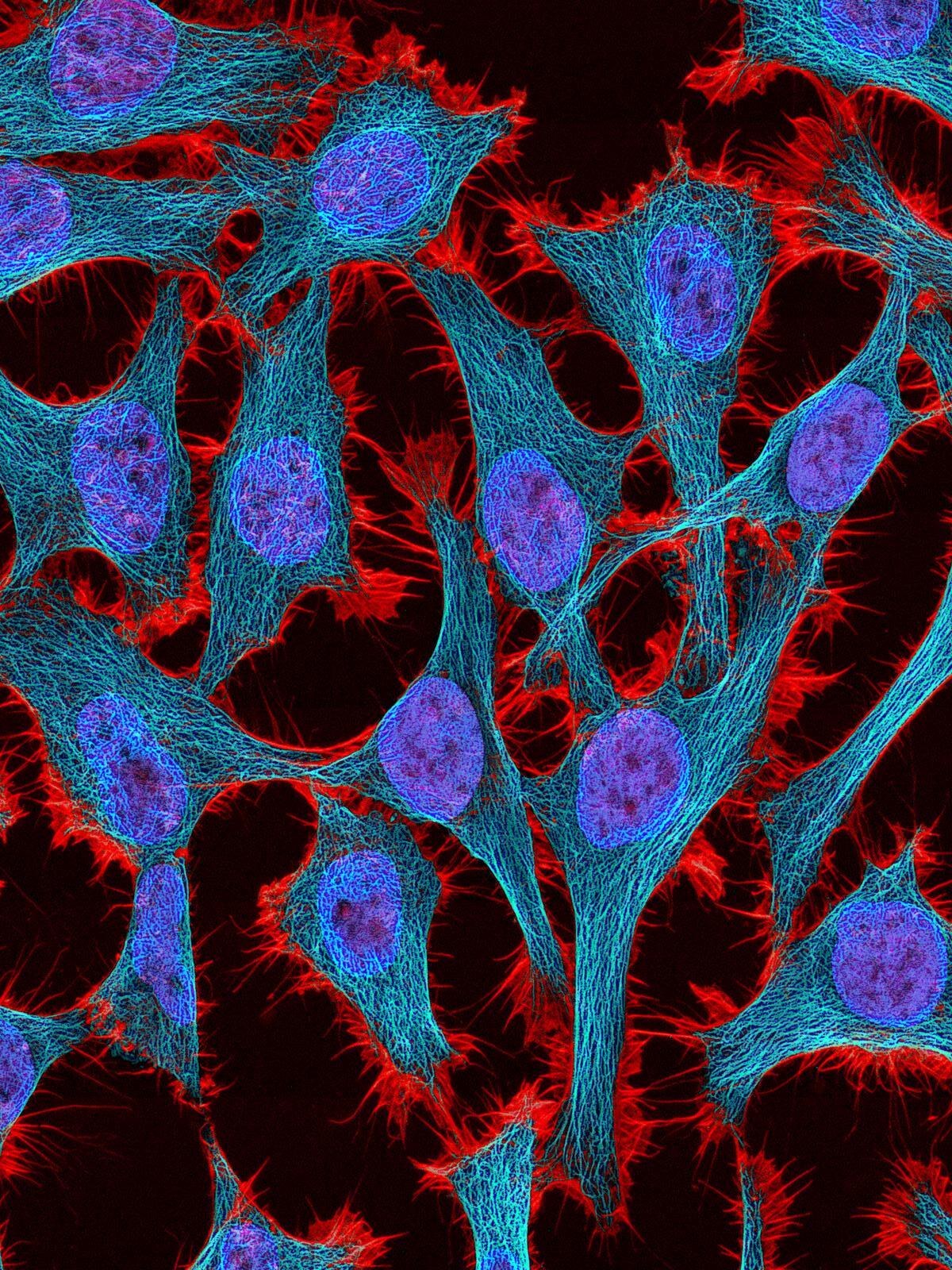
A publication from


The world owes much to Henrietta Lacks. Lacks was a black women whose cells were removed ths ed
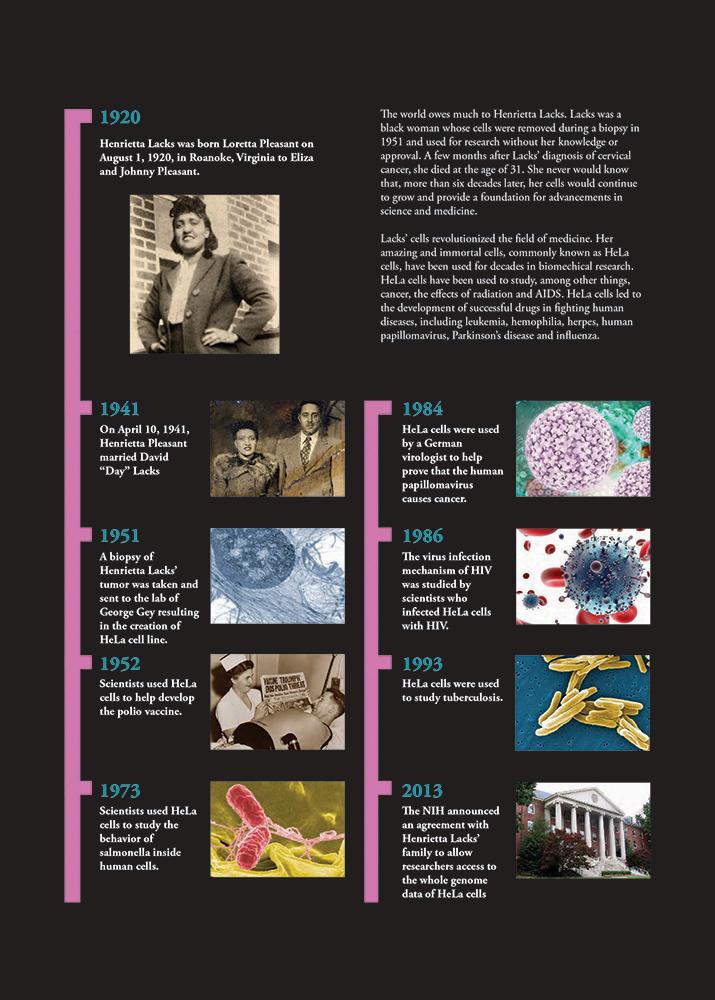





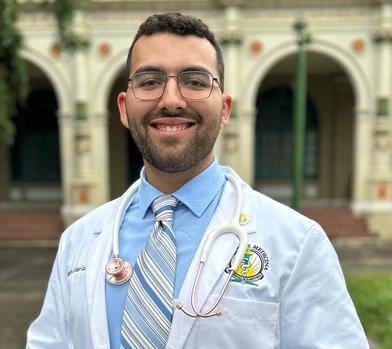
Alejandro Arbona Lampaya Chairman of the Board

Sofía I. Malavé Ortiz Board Secretary


A publication from


The world owes much to Henrietta Lacks. Lacks was a black women whose cells were removed ths ed







Alejandro Arbona Lampaya Chairman of the Board

Sofía I. Malavé Ortiz Board Secretary

Avery R Arsenault Vice-Chair

Marcel De Jesús Vega Peer Review Coordinator


Christian G. Correa García Board Member

1. Ashley Cianchini de la Sota, MS3 University of Puerto Rico School of Medicine
2. Jan P. Villanueva Medina, MPH, MS2 University of Puerto Rico School of Medicine
3. Alejandro R. Gonzalez-Barreto, MS3 University of Puerto Rico School of Medicine
4 Alejandro Arbona Lampaya, MS2 University of Puerto Rico School of Medicine
5. Avery R. Arsenault, Post-Baccalaureate IRTA Fellow, Office of the Clinical Director (OCD), National Institute of Alcohol Abuse and Alcoholism
6 Héctor Cancel Asencio, Post-Baccalaureate IRTA Fellow, National Institute of Neurological Disorders and Stroke
7. Sofía I. Malavé Ortiz, Post-Baccalaureate IRTA Fellow, National Institutes of Environmental Health Sciences
8. Marcel De Jesús Vega, Post-Baccalaureate IRTA Fellow, National Institute of Alcohol Abuse and Alcoholism
9. Christian G. Correa García, MS3 San Juan Bautista School of Medicine



This page was intentionally left blank

Women’s Hospital in Ponce Beyond her work in medicine, she played a significant role in Puerto Rico’s feminist movement, joining the Commission of the Association of Puerto Rican Suffragist Women Through her advocacy, Dr Pérez Marchand fought in Washington, DC for the Puerto Rican women’s right to vote (Azize Vargas & Avilés, 1990; Negrón Muñoz, 1935)
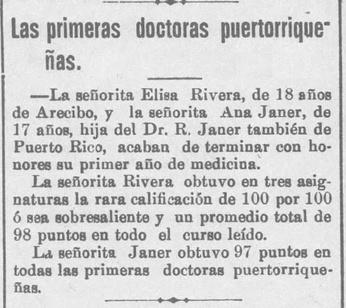
Figure 1: Newspaper article “[The First Puerto Rican Female Doctors]” (La Correspondencia de Puerto Rico, 1906)
Dr Palmira Gatell, who graduated from the Women’s Medical College in 1910 (Barceló Miller, 1992; Azize Vargas & Avilés, 1990), became the first woman to participate in a meeting of the Medical Association, a space overwhelmingly dominated by men This bold decision was not easy, considering the widespread opposition to female representation during the suffrage movement She also served as President of the Women’s Civic Club and the Board Pro Children’s Hospital, fighting for women and children’s access to healthcare (Azize Vargas & Avilés, 1990)

Dr Martha (María) Robert de Romeu became the first Puerto Rican female physician to graduate from a co-educational medical college She earned her degree at Tufts Medical College in Boston, one of the first institutions to admit both men and women without requiring separate programs for female students (Azize Vargas & Avilés, 1990) After returning to PR, Dr Robert dedicated her career to advancing women’s health She practiced in the San Aurelio Hospital and the Department of Gynecology of the Polyclinic in Mayagüez Like many pioneering women of her time, Dr Robert also participated in many social and political movements such as the Suffragist Social League and the Women National Party (Azize Vargas & Avilés, 1990; Negrón Muñoz, 1935)
During these conflicting times, it was rare for women to participate in top positions of healthcare or politics Nevertheless, these Puerto Rican figures changed this course of history Dr Robert was the first woman appointed as Director of the Maternal and Child Hygiene Bureau within Puerto Rico’s Department of Health, providing solutions for maternal and infant mortality (Azize Vargas & Avilés, 1990) During this role, the Department of Health saw a significant decline in maternalinfant mortality rates, reinforcing the role that women can play in shaping healthcare policies, especially in matters of women’s health (Azize Vargas & Avilés, 1990).

Dr. Josefina Villafañe, after completing her medical studies on the mainland (Barceló Miller, 1992), became a key figure in Puerto Rico’s fight against tuberculosis She held a significant position as the President of the Antituberculosis League in PR, bringing services and medical advances for the Puerto Rican community during this epidemic (Azize Vargas

& Avilés, 1990) Also a passionate advocate for women’s rights, Dr Villafañe strongly supported the feminist movement She believed feminism was a path to include female intelligence and female art throughout the world, searching for equity and justice for women (Negrón Muñoz, 1935) In recognition of her incredible legacy, the medical community in Puerto Rico dedicated the first Puerto Rican Congress on Women and Health to Dr Villafañe in 1989, honoring her contributions to women, female physicians, and the medical community (Proyecto de Estudios de la Mujer del Colegio Universitario de Cayey, 1989)

Figure 4: Josefina Villafañe de Martínez Álvarez (NegrónMuñoz,1935)
With the onset of World War I, women like Dr Dolores Mercedes Piñero sought to contribute to the war effort by joining the United States Military, hoping to serve in environments that needed female representation. As one of the first Puerto Rican female physicians (Azize Vargas & Avilés, 1990), Dr Piñero was well aware of the challenges she would face, especially considering that Puerto Rico had only recently been granted US citizenship After initially being rejected by the US military due to her gender,Dr.Piñerodidnotgiveup.Shepersisted and was eventually assigned to the Medical Service Corps of the Army Medical Department, a milestone for women across the country (Jensen,1993;Serrano,2020)
ReflectingontheLegacy
The journey of Puerto Rican female physicians during the early 20th century represents an inspiring story of resilience, determination, and progress for the Puerto Rican community These pioneers not only overcame systemic barriers to education and professional development, but also became advocates for social and political change. Through their dedication to women and children’s health, advocacyforwomen’srights,andtirelesswork

Figure 5: Flyer [First Puerto Rican Congress on Women and Health] (Proyecto de Estudios de la MujerdelColegioUniversitariodeCayey,1989)
in medicine, they shattered societal norms and createdalegacy
The impact of their legacy continues to pave the way for medical students today, teaching us the importance of the commitment we make to our island of Puerto Rico Additionally, they remind us of the importance of fostering diversity and inclusion in the medical profession
As we reflect on their lives, we honor their courage to break barriers and bring the female perspective into the world of medicine May their stories continue to inspire future generations of women in medicine, carrying forwardtheirlegacy


Writtenby:SophiaI.López
PublishedonlineonFebruary7,2025
Heart disease is the leading cause of death for both men and women According to the American Heart Association’s latest statistics, 40.3% of cardiovascular deaths are caused by coronary heart disease Atherosclerotic cardiovascular disease (ASCVD) is a major causes of coronary heart disease and involves the buildup of plaque within arteries, which can obstruct the passage of blood – and therefore oxygen – to organs
Women have a lower prevalence of ASCVD than men before menopause However, after menopause, the prevalence of ASCVD in women increases and even surpasses that of men Natural menopause typically occurs between the ages of 45 and 55 for most women, which coincides with the timing of a significant increase in ASCVD risk (El Khoudary et al, 2020) Of course, factors such as race and presence of chronic diseases, like diabetes, also influence the onset of cardiovascular disease in women When considering why this significant increase occurs after menopause, the first factor that may come to mind is the change in hormone composition While estrogen plays a key role in this postmenopausal shift in cardiovascular health, there are other components that may contribute to this change
The transition into menopause includes a decline in estrogen, alterations in body fat and lipid composition, sleep pattern disruption, and appearance of vasomotor symptoms, such as hot flashes and night sweats. These factors all impact cardiovascular health in some way, but research on some of them remains limited Atherosclerosis is the process of plaque formation in arteries This plaque is composed of the buildup of fat, LDL cholesterol, and other substances Several studies on mice and human models have found that estrogen has protective effects against plaque formation
Estrogen induces nitric oxide production via the estrogen receptor a (ERa) in mice (Darblade et al, 2002) Nitric oxide induces vasodilation in blood vessels, maintains healthy endothelial function, and has anti-inflammatory properties that help prevent atherosclerosis Estrogen has also been found to reduce circulating levels of low-density lipoprotein (LDL), also known as “bad cholesterol”, by upregulating LDL receptors in the liver (Persson et al, 2012) The metabolic changes that occur during menopause alter lipid composition Postmenopausal women present with increased concentrations of LDL cholesterol and inflammatory biomarkers that promote the formation of plaque (Wang et al, 2018) Higher levels of LDL cholesterol in blood mean a higher rate of fat deposition in arteries and, therefore, development of atherosclerosis

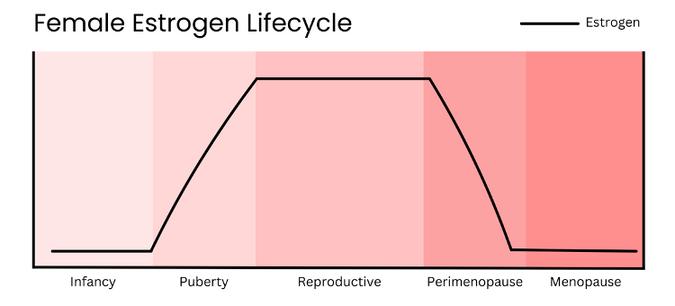
Regarding effective treatment and prevention options much remains to be studied and explored Current strategies focus on lifestyle modifications and pharmacotherapy Smoking cessation, diet, and exercise are the primary recommendations for reducing ASCVD risk For women with predisposing conditions such as hypertension, diabetes – or those who have already begun to develop ASCVD –pharmacological therapy with blood pressure and lipid-lowering medications is indicated These interventions are the standard management strategies for ASCVD in general and have been proven effective; however, none are specifically tailored for women going through menopause.
Although post-menopausal increase in ASCVD risk is linked to estrogen decline, therapy targeting this decline remains controversial and has not been approved for cardiovascular disease prevention This approach, known as hormone replacement therapy (HRT), involves the administration of estrogen to relieve menopausal symptoms such as hot flashes and night sweats Currently, the American Heart Association advises against the use of HRT for cardiovascular disease prevention Research has shown that HRT as a secondary prevention method for coronary vascular disease (CVD) does not significantly reduce cardiovascular disease and actually increases the risk of adverse events such as breast cancer, stroke, and thromboembolism (Kim et al , 2020)
Some research suggests that when HRT is initiated before menopause in women under 60 years of age, it may reduce cardiovascular disease and mortality (Hodis and Mack, 2022) This idea, known as the “timing hypothesis”, is based on estrogen’s protective effects on blood vessels, including vasodilation, inflammatory control, and lipid level reduction The thought behind this hypothesis is that if these protective effects are administered before menopause exerts its damaging effects on blood vessel health, then HRT could serve as a primary prevention method against cardiovascular disease in women. However, there is insufficient research to support this, and the positive results observed are not significant enough to outweigh the risks associated with HRT There aren’t any other therapeutic strategies that specifically target the hormonal changes linking menopause and heart disease, highlighting the need for further research and innovation.
Although estrogen decline and the metabolic alterations that occur during menopause are evident contributors to the increase ASCVD risk in women, other factors must also be considered when evaluating prevalence. Cardiovascular disease in premenopausal and postmenopausal women is often underdiagnosed due to the difference in symptomatic presentation and the lack of research on female health topics Women are generally less aware of the symptoms they should look out for and how common cardiovascular disease is among women.

Men typically present with the classic chest pain traditionally associated with heart disease, while women experience more atypical symptoms such as abdominal and jaw pain, nausea, and fatigue These symptoms are frequently overlooked, not only by patients, but sometimes even by medical professionals Education on how cardiovascular disease affects women could improve patient awareness, helping them recognize the signs and symptoms that indicate when to seek medical attention
In heart disease, timely intervention is key to preventing progression and mortality It is also important to acknowledge the lack of research for strategies targeted towards the prevention of post-menopausal heart disease and women’s cardiovascular health in general Addressing the unique risk factors and knowledge gaps associated with cardiovascular disease in women is essential for improving diagnosis, prevention, and treatment strategies, particularly during and after the menopausal transition
References:
1 Darblade, B, Pendaries, C, Krust, A, Dupont, S, Fouque, M-J, Rami, J, Chambon, P, Bayard, F, & Arnal, J-F (2002) Estradiol alters nitric oxide production in the mouse aorta through the α, but not β, estrogen receptor Circulation Research, 90(4), 413–419 https://doi.org/10.1161/hh0402.105096
2 El Khoudary, S R (2023) The menopause transition: A critical stage for cardiovascular disease risk acceleration in women. Menopause. https://doi.org/10.1097/gme.000000000000217 2
3. Hodis, H. N., & Mack, W. J. (2022). Menopausal hormone replacement therapy and reduction of all-cause mortality and cardiovascular disease The Cancer Journal, 28(3), 208–223 https://doi.org/10.1097/ppo.0000000000000591
4 Kim, J-E, Chang, J-H, Jeong, M-J, Choi, J, Park, J, Baek, C, Shin, A, Park, S M, Kang, D, & Choi, J.-Y. (2020). A systematic review and metaanalysis of effects of menopausal hormone therapy on cardiovascular diseases Scientific Reports, 10(1) https://doi.org/10.1038/s41598020-77534-9
5 More than half of U S adults don’t know heart disease is leading cause of death, despite 100-year reign American Heart Association (2024, January 24) https://newsroom.heart.org/news/more-thanhalf-of-u-s-adults-dont-know-heart-diseaseis-leading-cause-of-death-despite-100-yearreign
6 Persson, L , Henriksson, P , Westerlund, E , Hovatta, O , Angelin, B , & Rudling, M (2012) Endogenous estrogens lower plasma PCSK9 and LDL cholesterol but not lp(a) or bile acid synthesis in women Arteriosclerosis, Thrombosis, and Vascular Biology, 32(3), 810–814 https://doi.org/10.1161/atvbaha.111.242461&nbs p;
7 Roeters van Lennep, J E , Tokgözoğlu, L S , Badimon, L , Dumanski, S M , Gulati, M , Hess, C N , Holven, K B , Kavousi, M , Kayıkçıoğlu, M , Lutgens, E , Michos, E D , Prescott, E , Stock, J K , Tybjaerg-Hansen, A , Wermer, M J , & Benn, M (2023) Women, lipids, and atherosclerotic cardiovascular disease: A call to action from the European Atherosclerosis Society European Heart Journal, 44(39), 4157–4173 https://doi.org/10.1093/eurheartj/ehad472&nb sp;
8 Wang, Q , Ferreira, D L , Nelson, S M , Sattar, N., Ala-Korpela, M., & Lawlor, D. A. (2018). Metabolic characterization of menopause: Cross-sectional and longitudinal evidence BMC Medicine, 16(1) https://doi.org/10.1186/s12916018-1008-8


Writtenby:VictoriaBlaiotta-Vazquez,MPH
PublishedonlineonMarch 11,2025
There are many physiologic changes that have an effect on the cardiovascular system during pregnancy such as hemodynamic alterations, hypercoagulability, increased cardiac output and oxygen demand, vasodilation, etc (Morton, 2021) As cardiovascular disease is one of the main indirect contributors to maternal mortality in developed countries, it is of utmost importance to explore how predisposing factors such as congenital heart defects (CHD) can impact the mother during pregnancy (Wander et al, 2023)
The percentage of pregnant women with CHD has been increasing since interventions such as surgery and medications have increased these patients’ prognoses. Even though they can live healthy lives, these patients have an increased risk of serious cardiac events during pregnancy, although it depends on the severity of the heart defect (Salciccioli & Cotts, 2021) Thus, pregnant women with CHD need special attention when it comes to monitoring their cardiovascular health to improve both maternal and fetal health. Therefore, the goal of this review is to discuss the appropriate approach for managing and preventing risk in pregnant women with congenital heart defects
The most appropriate way to reduce or prevent any type of risk is to start working before conception, whenever possible, through preconception counseling The American Heart Association (AHA) establishes a framework for the counseling of patients with CHD, which includes discussion of the potential risk of recurrence in children, individualized clinical status, medication adjustments, and risks during pregnancy, delivery, and postpartum (Stout et al, 2018) The AHA also emphasizes the importance of an adult congenital heart disease (ACHD) cardiologist being involved in the discussion for more accurate pregnancy risk assessment Moreover, various predictive scales have been developed to assess maternal complications in CHD patient, aiming to reduce variability and improve case comparisons Among these, the World Health Organization (WHO) scale appears to more accurately predict cardiovascular outcomes in pregnant women with CHD (Bredy et al, 2023)
During pregnancy, a better prognosis can be achieved with a multidisciplinary team composed of a cardiologist, obstetrician, anesthetist, specialist nurse, and midwife (Wander et al, 2023) Specific interventions and recommendations during pregnancy are individualized and vary according to the specific cardiologic profile of the patient and the outcomes presented by the fetus during ultrasounds Wander et al (2023) present the management and complications of each


Writtenby:AdrianaDíazRamírez
PublishedonlineonApril14,2025
Introduction
Throughout history, nurses have exemplified resilience, dedication, and a profound commitment to their work Acknowledging their contributions from the past to the present is essential to fostering admiration, respect, and equitable treatment for all nursing professionals For many people, the work of nurses is underestimated to execute tasks such as taking vitals and administering medications However, our profession is much more than that: it is an essential labor with a history full of sacrifices and contributions that many are unaware of Recognizing this legacy is not only an act of justice but also a necessary step in empowering current and future generations of nurses
By shedding light on our vital role, society can begin to truly value nursing as the backbone of healthcare it has always been With impressive statistics in recent years, there has been a decline in the number of nurses working in hospitals, as well as a deterioration in their emotional and physical health Recognizing the importance of nursing history will help fulfill the profession’s clear need for appreciation, empowering each nurse to recognize the significance of their role and advocate for their needs to be heard This reality is clearly reflected in recent studies highlighting the critical challenges nurses face today
According to a 2023 publication by Ashleigh Hollowell in The Journal of Nursing, only 15% of nurses intend to remain in their current positions over the next year, while 85% are considering leaving the profession to explore other career opportunities or to pursue further education The study highlights alarming statistics: 90% of respondents indicated that increasing support staff would be a critical solution, 89% suggested that reducing the patient-to-nurse ratio would help make workloads more manageable, 87% emphasized the need to prioritize salary increases, and 86% stressed the importance of creating safer work environments Furthermore, 86% of nurses believed that having greater representation at decision-making tables would significantly benefit the profession
The role of nursing traces back to a key moment in history, where this pioneer is recognized for beginning her work. During the Crimean War, in 1854, a shocking event occurred: more soldiers died from infections than in combat During this war, the first recognized nursing theory emerged: the theory of the five essential components of environmental health pure air, clean water, effective sanitation, hygiene, and light 171 years later, every branch of medicine continues to apply the principles established by the pioneer in the healthcare field, Florence Nightingale Since then, nursing has evolved and left its mark in various parts of the world

In Puerto Rico, one of the pioneers of the nursing profession was Rosa González Born in Lares, González assumed significant responsibilities within the field As a nurse and health activist in the early 20th century, she advocated for improved sanitary conditions and greater professional recognition According to her biography on the website of the Medical Sciences Campus of the University of Puerto Rico in Río Piedras, her most notable achievements include the reorganization of the School of Nursing at the Hospital of Tropical Medicine in 1931; serving as field secretary (without pay) for the Nurses Association from (1933 to 1935); organizing and directing the first Maternal Health Clinic in Puerto Rico from (1936 to 1940); directing the Nursing Service of the American Red Cross in Puerto Rico from (1942 to 1946); and authoring the Medical Dictionary for the Nurse (1917) and The Unknown Facts (1929), the latter advocating for the creation of a Board of Nurse Examiners, which was ultimately established in 1930.


Global Impact of Nursing: The Case of
The vocation of nurses transcends borders A striking example occurred 11 years ago, more than 7,500 kilometers (about 4660.28 mi) from Puerto Rico, when an Ebola outbreak shook Africa In Liberia, a family was sick, but they had a young nursing student Fatu Kekula saved her parents and sister from Ebola by feeding them, cleaning them, and administering medications independently She avoided infection by creating her own protective gear, covering her body with garbage bags and adhesive tape For several weeks, she safeguarded her family, introducing a new protection method, especially essential for families in need and facing economic disadvantages
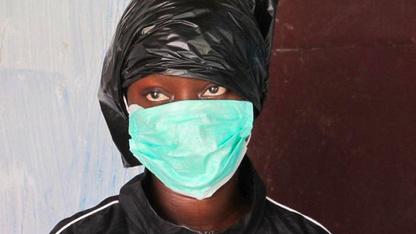
Today, the legacy of these women is reflected in various aspects of patient care: in the professors who pass on their knowledge to new generations of nurses, shaping them into wellrounded professionals In the mother who is also a nurse yet still pours love into each patient. In the nurse who treats an elderly patient with dignity In the young woman arriving at the hospital with new knowledge, ready to demonstrate what she has learned In the nurse who washed the body of the person you love when they were no longer alive In the sacrifice of the nurse pursuing a doctorate to forge a path of respect in the community
The footprints of nurses can be found in every step taken within a hospital In the exhausting twelve-hour shifts, in the arrival of a new life, in the discussions aimed at improving each patient’s treatment plan, in every venipuncture, educating patients and families about their conditions and care plans, coordinating with doctors, therapists and other healthcare professionals to ensure proper treatment, assisting in operating rooms and much more


Writtenby:NicoleJensenVelez
PublishedonlineonApril18,2025
Introduction
Oral health plays a vital role in overall well-being Its importance often goes beyond just having a bright white smile. Why is oral health so important? According to the World Health Organization (WHO), nearly 35 billion people are affected by oral diseases The most prevalent condition is dental caries, affecting an estimated 25 billion people with permanent teeth Severe periodontal disease, also known as gum disease, impacts approximately 1 billion people, leading to tooth loss or edentulism, especially among older adults (WHO, 2022)
Oral cancers, particularly oropharyngeal cancer, are on the rise in many countries, being the 16th most common neoplasm worldwide Risk factors such as tobacco use, alcohol consumption, and human papilloma virus (HPV) infection are contributing to this increase Oropharyngeal cancer accounts for over 377,000 new cases and more than 177,000 deaths annually worldwide (Miranda-Filho & Bray, 2020) Untreated oral diseases can not only cause local effects such as pain, infections, or difficulty eating, but can also contribute to broader systemic health issues (Scannapieco & Cantos, 2016)
The challenge we face today is the misconception that tooth brushing alone is sufficient In reality, brushing often focuses only on front-facing and visible areas, overlooking lateral (interproximal and incisal) areas as shown in Figure 1. These areas between the teeth and along the gumline
are where plaque and bacteria can accumulate unnoticed, and they are the most common sites for the formation of caries (Deinzer et al, 2018) This oversight can contribute to the progression of gum disease, tooth decay and entry of harmful bacteria into the bloodstream This increases the risk for systemic conditions such as cardiovascular disease, diabetes, and adverse pregnancy outcomes (Weidlich et al, 2008) Raising awareness about the connection between oral health and overall well-being is key to helping individuals understand that taking care of their teeth is a long-term investment in their health
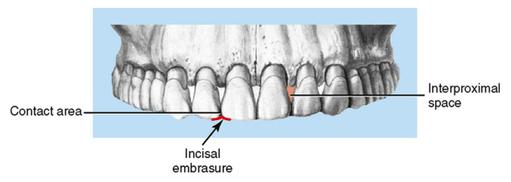
Figure 1. Illustration of Interproximal Contact and Space Adapted from Themes, U (2015, January) 3: Fundamental and preventive curvatures: proximal alignment of the teeth and protection of the periodontium Pocket Dentistry https://pocketdentistrycom/3-fundamental-andpreventive-curvatures-proximal-alignment-of-theteeth-and-protection-of-the-periodontium/

While the importance of oral health is often recognized in terms of appearance, its impact on overall health cannot be overlooked The foundation or overall health Scientific research has shown that poor oral health can contribute to systemic conditions such as cardiovascular diseases and diabetes, lung diseases, and obstetric complications (Fiorillo, 2019) Emerging studies emphasize the relationship between periodontal disease and systemic health is linked to diabetes, metabolic syndrome, obesity, eating disorders, liver disease, cardiovascular disease, Alzheimer disease, rheumatoid arthritis, and even cancer (Kapila, 2021) For instance:
1 Cardiovascular disease: Inflammation from periodontal disease can lead to atherosclerosis, increasing the risk of heart attacks and strokes by promoting plaque buildup in blood vessels (Lockhart et al., 2012)
2 Diabetes: High blood sugar can weaken the immune system and worsen gum disease, while severe gum disease can make it harder to control blood glucose levels (NIH, 2024)
3 Alzheimer’s disease: Porphyromonas gingivalis, a key pathogen in periodontitis, has been found in the brains of Alzheimer’s patients and is associated with increased neuroinflammation (Dominy et al , 2019)
4.Rheumatoid arthritis: Periodontal disease may worsen rheumatoid arthritis by increasing systemic inflammation Porphyromonas gingivalis can trigger immune responses linked to the condition (Bingham & Moni, 2013)
5 Cancer: Chronic inflammation and exposure to oral bacteria have been linked to increased risk of oral, pancreatic, and other cancers (Michaud et al , 2013)
These oral conditions can affect systemic health, as shown in Figure 2. To address these complex relationships, a comprehensive approach to patient care is necessary This approach involves evaluating not just oral health but also considering broader systemic health factors, such as lifestyle habits, medical history, and risk factors for chronic diseases Integrating both oral and systemic health assessments ensures early detection of potential health issues, promotes more effective prevention strategies, and leads to improved health outcomes For example, treating periodontal disease in diabetic patients can help manage blood sugar
levels, and addressing oral infections may reduce the risk of cardiovascular events A holistic approach allows healthcare providers to tailor more effective, personalized care for patients
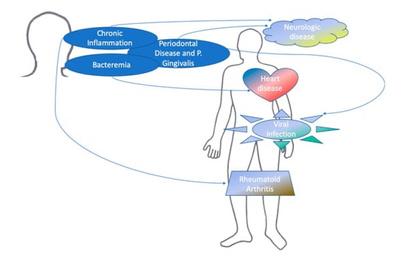
Figure 2. Example of how oral conditions can affect systemic health Adapted from Fiorillo, L (2019) Oral Health: The First Step to Well-Being Medicina, 55(10), 676 (Fiorillo, 2019)
To prevent serious systemic conditions, it is crucial to revisit the basics and learn the proper way to perform toothbrushing A study highlighted that tooth brushing, when done incorrectly, is not enough to ensure good oral health. It is crucial to maintain a high quality brushing by giving attention to the occlusal and lateral surfaces, which are often forgotten (Deinzer et al , 2018) Failing to properly clean these areas, can lead to high vulnerability to decay, specifically in the lateral and proximal surfaces of the teeth
To maintain optimal oral health and prevent systemic diseases, it is essential to learn that brushing the teeth should be twice a day for two minutes each time as shown in Figure 3 The toothbrush should be positioned at a 45 degree angle to the gums, gently moving the brush back and forth (American Dental Association, 2012) Additionally, cleaning between teeth with floss daily and adding a water flosser can provide extra benefits It is also important to replace the toothbrush every three to four months (Mayo Clinic, 2024) Regular dental check-ups and professional cleaning are crucial for maintaining overall oral health By following these practices, individuals can help prevent dental issues and further systemic diseases.

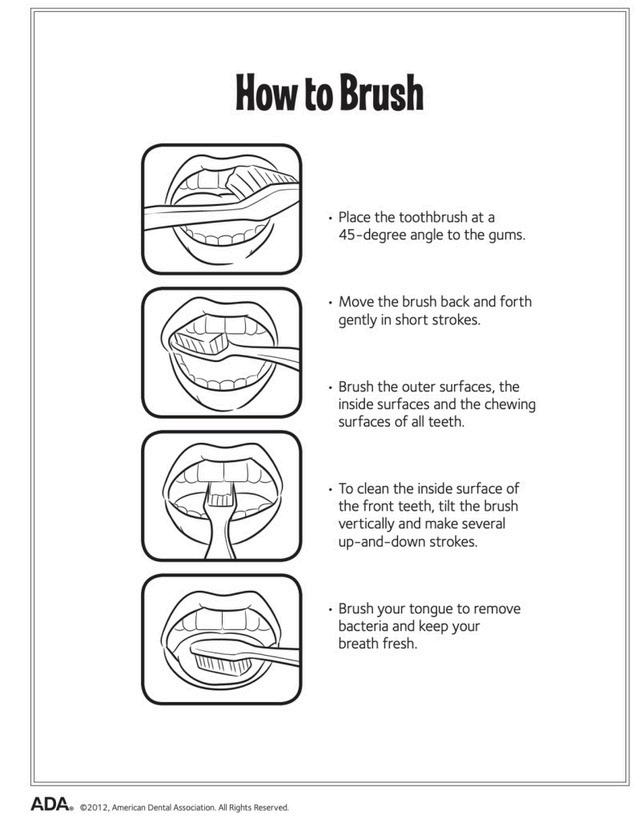
Figure 3. How to effectively brush Adapted from Brushing your teeth (n d ) MouthHealthy –Oral Health Information From the ADA. Adapted from Themes, U. (2015, January). 3: Fundamental and preventive curvatures: proximal alignment of the teeth and protection of the periodontium Pocket Dentistry https://pocketdentistry com/3-fundamental-andpreventive-curvatures-proximal-alignment-of-the-teeth-and-protection-of-the-periodontium/
Addressing the direct link between oral health and systemic conditions is essential for raising awareness. Oral health is not just about a bright smile; it plays a crucial role in overall wellbeing Untreated oral diseases can lead to local issues like pain and infections, but they can also contribute to serious systemic health problems, including cardiovascular disease, diabetes, and even cancer Recognizing the importance of oral health and its impact on general health is key to improving health outcomes, raising awareness, and fostering a population that is more informed about their oral care Prioritizing oral health is essential for preventing serious health issues and improving quality of life

Image credits:
1 Figure 1. Adapted from Themes, U (2015, January) 3: Fundamental and preventive curvatures: proximal alignment of the teeth and protection of the periodontium Pocket Dentistry https://pocketdentistry com/3-fundamental-and-preventive-curvatures-proximalalignment-of-the-teeth-and-protection-of-the-periodontium/
2 Figure 2. Adapted from Fiorillo, L (2019) Oral Health: The First Step to Well-Being Medicina, 55(10), 676 https://doi.org/10.3390/medicina55100676
3 Figure 3. Adapted from Brushing your teeth (n d ) MouthHealthy – Oral Health Information From the ADA https://www.mouthhealthy.org/all-topics-a-z/brushing-yourteeth
Sources:
1 World Health Organization: WHO (2025, March 17) Oral health https://www.who.int/news-room/fact-sheets/detail/oral-health
2 Miranda-Filho, A , & Bray, F (2020) Global patterns and trends in cancers of the lip, tongue and mouth Oral Oncology, 102, 104551 https://doi.org/10.1016/j.oraloncology.2019.104551
3 Scannapieco, F A , & Cantos, A (2016) Oral inflammation and infection, and chronic medical diseases: implications for the elderly Periodontology 2000, 72(1), 153–175 https://doi.org/10.1111/prd.12129
4 Deinzer, R , Ebel, S , Blättermann, H , Weik, U , & Margraf-Stiksrud, J (2018) Toothbrushing: to the best of one’s abilities is possibly not good enough BMC Oral Health, 18(1) https://doi.org/10.1186/s12903-018-0633-0
5 Weidlich, P , Cimões, R , Pannuti, C M , & Oppermann, R V (2008) Association between periodontal diseases and systemic diseases Brazilian Oral Research, 22(suppl 1), 32–43 https://doi.org/10.1590/s1806-83242008000500006
6.Fiorillo, L. (2019). Oral Health: The First Step to Well-Being. Medicina, 55(10), 676. https://doi.org/10.3390/medicina55100676
7 Kapila, Y L (2021) Oral health’s inextricable connection to systemic health: Special populations bring to bear multimodal relationships and factors connecting periodontal disease to systemic diseases and conditions. Periodontology 2000, 87(1), 11–16. https://doi.org/10.1111/prd.12398
8 Lockhart, P B , et al (2012) Periodontal disease and atherosclerotic vascular disease: Does the evidence support an independent association? Circulation, 125(20), 2520–2544 https://doi.org/10.1161/cir.0b013e31825719f3
9 Diabetes & oral health (National Institute of Dental and Craniofacial Research, 2024) https://www.nidcr.nih.gov/health-info/diabetes
10 Dominy, S S , et al (2019) Porphyromonas gingivalis in Alzheimer’s disease brains: Evidence for disease causation and treatment with small-molecule inhibitors. Science Advances, 5(1) https://doi.org/10.1126/sciadv.aau3333
11 Bingham, C O , & Moni, M (2013) Periodontal disease and rheumatoid arthritis Current Opinion in Rheumatology, 25(3), 345–353 https://doi.org/10.1097/bor.0b013e32835fb8ec
12.Michaud, D. S., et al. (2012). Plasma antibodies to oral bacteria and risk of pancreatic cancer in a large European prospective cohort study Gut, 62(12), 1764–1770 https://doi.org/10.1136/gutjnl-2012-303006
13 Themes, U (2015, January) 3: Fundamental and preventive curvatures: proximal alignment of the teeth and protection of the periodontium. Pocket Dentistry. https://pocketdentistry.com/3-fundamental-and-preventive-curvatures-proximalalignment-of-the-teeth-and-protection-of-the-periodontium/
14 Brushing your teeth (n d ) MouthHealthy – Oral Health Information From the ADA https://www.mouthhealthy.org/all-topics-a-z/brushing-your-teeth
15 Oral health: A window to your overall health (March, 2024) Mayo Clinic https://www.mayoclinic.org/healthy-lifestyle/adult-health/in-depth/dental/art20047475

also been found A cross-sectional study that examined the prevalence of lifetime PD among Puerto Rican adults in Boston found that 37% of adults aged 45-75 years had experienced it at leastonce(Todorovaetal,2010) Additionally,the authors found a positive association between perceived discrimination and depression symptoms, perceived stress, and medical conditions
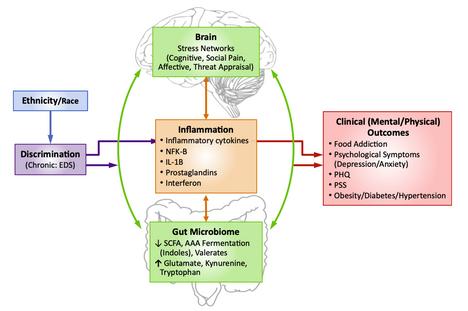
Figure 1. Effects of discrimination in clinical outcomesviathebrain-gut-microbiomesystem
Note: The authors’ conceptual model explains the association between discrimination and clinical outcomes through the brain-gut-microbiome system Adapted from “How Discrimination Gets Under the Skin: Biological Determinants of Discrimination Associated With Dysregulation of the Brain-Gut Microbiome System and Psychological Symptoms,” by T S Dong, G C Gee, H Beltran-Sanchez, M Wang, V Osadchiy, L A Kilpatrick,Z Chen,V Subramanyam,Y Zhang,Y Guo,J S Labus, B Naliboff, S Cole, X Zhang, E A Mayer, & A Gupta, 2023, Biological Psychiatry, 94(3), 203–214 (https://doiorg/101016/jbiopsych202210011)
However, no studies have documented the impactofPDamongyoungPuertoRican adultsatthemomentthisarticlewaswritten
Depression is one of the most commonly diagnosed mental health conditions among adults in the United States (Terlizzi & Zablotsky, 2024) In the last five years, global reports have documented an ongoing rise in depression across populations (Santomauro et al., 2021). Symptoms of depression may be divided into two categories: physical and behavioral (National Institute of Mental Health, 2024) Physical symptoms may include difficulty concentrating, remembering, or making decisions; fatigue, lack of energy, or feeling slowed down; and changes in appetite or unplanned weight. Similarly, behavioral symptoms include loss of interest or pleasure in hobbies and activities, thoughts of death or suicide or suicide attempts, and increased anger or irritability (National Institute of Mental Health,2024)
In 2019, the National Center for Health Statistics developed the National Health Interview Survey (NHIS), sampling 31,997 US adults, which showed that the proportion of adults experiencing symptoms of depression in the past two weeks was highest (21%) among those aged 18-29 years (Villarroel & Terlizzi, 2020) In PR, a community sample of 1,497 young adults from the Puerto Rico Young Adults’ Stress, Contextual, Behavioral & Cardiometabolic Risk (PR-OUTLOOK) study concluded that 60% of individuals reported depression symptoms (López-Cepero et al, 2023), almost 40% more than in the US Previous studies conducted on other Latino adults, African-American women, and Korean young adults have associated perceived discrimination with elevated depressionsymptoms(Kimetal,2019;Wardet
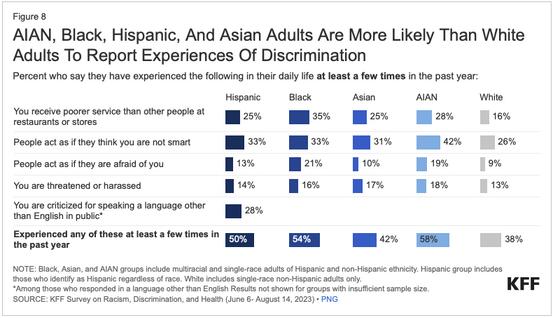
Figure2.DiscriminationintheUnitedStates
Note ExperiencesofdiscriminationintheUnitedStatesamongminoritygroups Adaptedfrom“SurveyonRacism,Discrimination,and Health Findings,” by S Artiga, L Hamel, A Gonzalez-Barrera, A Montero, L Hill, M Presiado, A Kirzinger, & L L Published, 2023, KFF (https://wwwkfforg/report-section/survey-on-racism-discrimination-and-health-findings/)

5. Ward, J. B., Feinstein, L., Vines, A. I., Robinson, W R , Haan, M N , & Aiello, A E (2019) Perceived discrimination and depressive symptoms among US Latinos: The modifying role of educational attainment. Ethnicity & Health, 24(3), 271–286 https://doi org/10 1080/13557858 2017 1315378
6. Ajrouch, K. J., Reisine, S., Lim, S., Sohn, W., & Ismail, A (2010) Perceived everyday discrimination and psychological distress: Does social support matter? Ethnicity & Health, 15(4), 417–434.
https://doi org/10 1080/13557858 2010 484050
7 Gonzales, K L , Jiang, L , Garcia-Alexander, G , Jacob, M. M., Chang, J., Williams, D. R., Bullock, A , & Manson, S M (2021) Perceived Discrimination, Retention, and Diabetes Risk Among American Indians and Alaska Natives in a Diabetes Lifestyle Intervention. Journal of Aging and Health, 33(7-8 Suppl), 18S-30S https://doi org/10 1177/08982643211013188
8. Martos-Méndez, M. J., García-Cid, A., GómezJacinto, L , & Hombrados-Mendieta, I (2020) Perceived Discrimination, Psychological Distress and Cardiovascular Risk in Migrants in Spain International Journal of Environmental Research and Public Health, 17(12), 4601 https://doi org/10 3390/ijerph17124601
9. Molina, K. M., Estrella, M. L., Rivera-Olmedo, N., Frisard, C , Lemon, S , & Rosal, M C (2018) It Weigh(t)s On You: Everyday Discrimination and Adiposity among Latinos Obesity (Silver Spring, Md.), 26(9), 1474–1480. https://doi org/10 1002/oby 22248
10 Artiga, S , Hamel, L , Gonzalez-Barrera, A , Montero, A , Hill, L , Presiado, M , Kirzinger, A , & Published, L L (2023) Survey on Racism, Discrimination, and Health Findings 10257 KFF https://www kff org/report-section/surveyon-racism-discrimination-and-health-findings/
11 Todorova, I L G , Falcón, L , Lincoln, A K , & Price, L L (2010) Perceived discrimination, psychological distress, and health Sociology of Health & Illness, 32(6), 843–861 https://doi org/10 1111/j 1467-9566 2010 01257 x
12 Terlizzi, E P , & Zablotsky, B (2024) Symptoms of Anxiety and Depression Among Adults: United States, 2019 and 2022 National health statistics reports, (213), CS353885 https://doi org/10 15620/cdc/64018
13. Santomauro, D. F., Herrera, A. M. M., Shadid, J , Zheng, P , Ashbaugh, C , Pigott, D M , Abbafati, C , Adolph, C , Amlag, J O , Aravkin, A Y , Bang-Jensen, B L , Bertolacci, G J , Bloom, S S., Castellano, R., Castro, E., Chakrabarti, S., Chattopadhyay, J , Cogen, R M , Collins, J K , Ferrari, A J (2021) Global prevalence and burden of depressive and anxiety disorders in 204 countries and territories in 2020 due to the COVID-19 pandemic The Lancet, 398(10312), 1700–1712 https://doi org/10 1016/S01406736(21)02143-7
14 National Institute of Mental Health (2024) Depression Retrieved May 8, 2024, fromhttps://www nimh nih gov/health/topics/de pression
15 Villarroel, M A , & Terlizzi, E P (2020) Symptoms of Depression Among Adults: United States, 2019. NCHS Data Brief, 379, 1–8.
16 López-Cepero, A A , Spruill, T , Suglia, S F , Lewis, T T , Mazzitelli, N , Pérez, C M , & Rosal, M C. (2023). Shift-and-persist strategies as a potential protective factor against symptoms of psychological distress among young adults in Puerto Rico Social Psychiatry and Psychiatric Epidemiology: The International Journal for Research in Social and Genetic Epidemiology and Mental Health Services, No Pagination Specified-No Pagination Specified https://doi.org/10.1007/s00127-023-02601-1
17 Kim, K , Jung, S J , Cho, S M J , Park, J H , & Kim, H C (2019) Perceived Discrimination, Depression, and the Role of Perceived Social Support as an Effect Modifier in Korean Young Adults Journal of Preventive Medicine and Public Health = Yebang Uihakhoe Chi, 52(6), 366–376 https://doi org/10 3961/jpmph 19 114
18 Stroud, C , Walker, L R , Davis, M , & Irwin, C E (2015) Investing in the health and well-being of young adults The Journal of Adolescent Health: Official Publication of the Society for Adolescent Medicine, 56(2), 127–129 https://doi org/10 1016/j jadohealth 2014 11 012


Writtenby:IranisN.HernándezGonzález,BSc
PublishedonlineonApril23,2025
Introduction
According to the Center for Disease Control, vitamin D is consumed by approximately 69% of adults monthly. It is widely consumed in our diet, but it can be synthesized by our own body (Mishra et al, 2023) This prohormone is one of the most discussed in daily life due to its known benefits and importance for bone maturation and development However, another approach can be considered when talking about vitamin D and its association to gut health. The gut microbiota is composed by organisms such as bacteria that exist in harmony with the stomach and assist in food digestion Vitamin D can support the health of this microbial community
Vitamin D is a fat-soluble hormone that can be consumed by diet, through fish oil, meat, egg yolks, and other dietary foods (National Health Service, 2020) It can also be synthesized by our skin due to UV light exposure, which triggers vitamin D synthesis (National Health Service, 2020). Absorption from the diet is made through the small intestine, both by passive diffusion and by a membrane carrier Passive diffusion is a process in which a molecule or hormone is absorbed passively by the cell’s membrane, in contrast to a membrane carrier in which the absorption is assisted by a protein in the membrane.
As mentioned before, this vitamin is fat soluble, that means that for better absorption it requires dietary fat (DynaMed, 2025) This can be affected by intestinal malabsorption conditions such as celiac disease and pancreatitis in which there’s a decreased ability to absorb nutrients (DynaMed, 2025) The process of synthesis in the body requires both liver and kidneys for hydroxylation, to go from an inactive form to an active form (NIH: Office of Dietary Supplements, 2020) This is why liver and kidney problems may affect vitamin D synthesis (DynaMed, 2025; NIH: Office of Dietary Supplements, 2020).
Vitamin D plays a big role in our bodies such as bone metabolism, anti-inflammation, cell proliferation, differentiation, myocardial contractility and insulin production (DynaMed, 2025) It is necessary for calcium reabsorption in the gut and phosphorus homeostasis, which allows for bone mineralization and metabolic function(DynaMed, 2025) Deficiency can lead to osteomalacia in adults and rickettsia in children, these are conditions related to bone weakness where they could break more easily(DynaMed, 2025; NIH: Office of Dietary Supplements, 2020) Other conditions that could be associated with deficiency of this vitamin are autoimmune conditions such as diabetes, inflammatory bowel disease and colorectal cancer(DynaMed, 2025)

Symbiotic relationship of bacteria with our body is essential for development and function of various organs, however, this is no exception with our gut microbiome (Singh et al , 2020) The gut microbiome is composed of bacteria, fungi, archaea, and viruses that coexist with the gut. These organisms are crucial for regulation of gut health (Anto & Blesso, 2022) In addition, each microbiome is unique to each person, adding complexity to the stomach and intestine ecosystem (Anto & Blesso, 2022).
The microbiome maintains the integrity of the gut lining (layer of cells inside the gastrointestinal system), helps with host immunity, digestion and metabolism of a person’s diet (Anto & Blesso, 2022) Aids in metabolism of sugars and vitamins, such as vitamin K, vitamin B1, B9 and B12. It can even suppress the growth of invasive bacteria and pathogens that may alter the microbiome (Akimbekov et al , 2020) Disturbance to the microbiota due to chemicals, diet, infections and inflammation response has been associated with various conditions For example, diabetes, intestinal bowel disease, and cancer; reinforcing how vital it is for immunity and metabolism of the gastrointestinal (GI) system (de Vos et al , 2022)
There has been a correlation with the effects of vitamin D with the gut microbiome Vitamin D helps regulate the gut’s mucosa by maintaining and healing the lining There is a receptor called Vitamin D receptor (VDR), once Vitamin D is consumed and detected in our body the receptor attaches to the vitamin, creating a VDR-Vitamin D complex (MedlinePlus, 2020) This complex promotes the transcription of proteins In terms of the gut microbiome, this VDR-Vitamin D complex increases the expression of various intracellular junction proteins (Akimbekov et al , 2020) These junction proteins promote a stronger mucosal lining of the GI system
This receptor (VDR) with the presence of Vitamin D , can also stimulate an antiinflammatory response and the expression of AMPs (antimicrobial peptides) (Akimbekov et al , 2020) AMPs are smaller proteins that boost the immune system and play a role in inhibition of pathogens that can be detrimental for the gut (Akimbekov et al , 2020) The microbiota also responds to the presence of Vitamin D by promoting more creation of the Vitamin D receptor, allowing more complexes to roam in
our gut (Aggeletopoulou et al., 2023). Lastly, some research studies have presented the possibility of vitamin D changing the microbiota to allow growth of more beneficial bacteria that can help us in our metabolism (Tangestani et al., 2021)
Deficiency of vitamin D may be related to a reduced reinforcement and protection of intestinal lining, therefore no benefits would be obtained It can reflect decreased antimicrobial protection and a decreased anti-inflammatory response (Akimbekov et al., 2020). Deficiency of the vitamin in contrast could increase risks for GI conditions such as IBD (Inflammatory Bowel disease) and cancer (Aggeletopoulou et al , 2023). There’s a lack of research on the long term effects of inadequate levels of vitamin D in the gut microbiome, nonetheless research reviews on the benefits in association with vitamin D in stomach and intestine health.
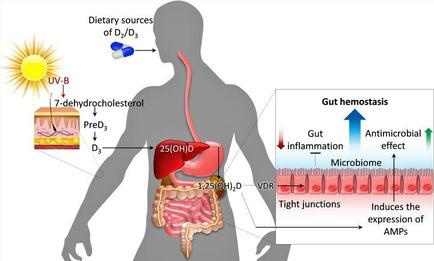
Figure 1. Vitamin D and its role in the gut microbiome and inflammation Adapted from Akimbekov NS, Digel I, Sherelkhan DK, Lutfor AB, Razzaque MS Vitamin D and the Host-Gut Microbiome: A Brief Overview Acta Histochem Cytochem 2020 Jun 26;53(3):33-42 doi: 10 1267/ahc 20011 Epub 2020 Jun 16 PMID: 32624628; PMCID: PMC7322162
Vitamin D has known benefits with bone development, but it extends its benefits within the stomach and intestine Associations can be made due to research on how vitamin D regulates and protects the GI system Vitamin D not only supports the gut microbiome but also strengthens the integrity of the gastrointestinal system at the cellular level This could be a point of consideration for further research where Vitamin D can be scoped as supportive treatment for patients with diagnosed Inflammatory Bowel Diseases such as Crohn’s, Ulcerative colitis or even cancer It could also be

used as a preventative measure in decreasing diagnosis. However more research is needed to truly understand and correlate at what levels or dosage of vitamin D is required to reap its benefits
In the meanwhile, it is recommended to have a good balanced diet, as well as moderate sun exposure (10 to 15 minutes) and maintain adequate levels of vitamin D According to NIH, adults should consume 15 micrograms (mcg) or 600 international units (IU) per day Ultimately, future research may determine if Vitamin D could play a role in preventative care for gastrointestinal diseases.
References:
1.Mishra, S., Gahche, J. J., Ogden, C. L., Dimeler, M., Potischman, N., & Ahluwalia, N. (2023). Dietary supplement use in the United States: national health and nutrition examination survey, 2017–March 2020
2 NHS (2020) Vitamin D Available from: https://www.nhs.uk/conditions/vitamins‐and‐minerals/vitamin‐d/
3 DynaMed Vitamins for Disease Prevention EBSCO Information Services Accessed March 31, 2025 https://www.dynamed.com/prevention/vitamins-for-disease-prevention
4 NIH: Office of Dietary Supplements (2020) Vitamin, D Health Professional Fact Sheet Available online: https://ods.od.nih.gov/factsheets VitaminDHealthProfessional/
5 Singh, P , Rawat, A , Alwakeel, M et al The potential role of vitamin D supplementation as a gut microbiota modifier in healthy individuals Sci Rep 10, 21641 (2020) https://doi.org/10.1038/s41598-020-77806-4
6 Anto, L , & Blesso, C N (2022) Interplay between diet, the gut microbiome, and atherosclerosis: Role of dysbiosis and microbial metabolites on inflammation and disordered lipid metabolism The Journal of Nutritional Biochemistry, 105, 108991
7 Akimbekov, N S , Digel, I , Sherelkhan, D K , Lutfor, A B , & Razzaque, M S (2020) Vitamin D and the Host-Gut Microbiome: A Brief Overview Acta histochemica et cytochemica, 53(3), 33–42 https://doi.org/10.1267/ahc.20011
8 de Vos, W M , Tilg, H , Van Hul, M , & Cani, P D (2022) Gut microbiome and health: mechanistic insights Gut, 71(5), 1020–1032 https://doi.org/10.1136/gutjnl-2021326789
9 MedlinePlus [Internet] Bethesda (MD): National Library of Medicine (US); [updated 2020 Jun 24] VDR gene, Vitamin D receptor https://medlineplus.gov/genetics/gene/vdr/
10 Aggeletopoulou, Ioanna et al (2023) Vitamin D and Microbiome The American Journal of Pathology, Volume 193, Issue 6, 656 – 668
11 Tangestani, H , Boroujeni, H K , Djafarian, K , Emamat, H , & Shab-Bidar, S (2021) Vitamin D and The Gut Microbiota: a Narrative Literature Review Clinical nutrition research, 10(3), 181–191 https://doi.org/10.7762/cnr.2021.10.3.181

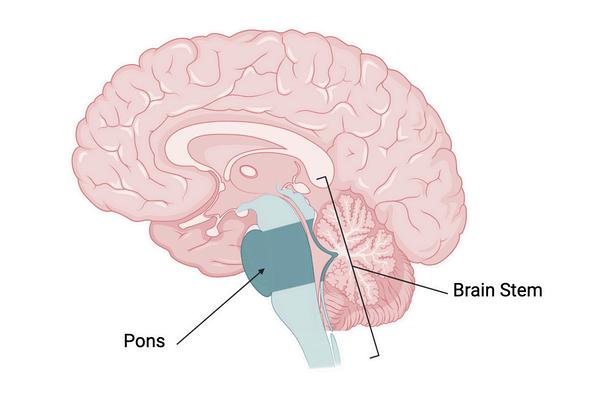
Figure 1: Illustration of a sagittal cut of the brain showing the pons within the brainstem
Despite the severe loss of voluntary motor function, LIS does not affect the areas of the brain responsible for thinking and awareness Patients remain fully conscious, able to hear and understand everything around them, but they are physically unable to move or speak This stark contrast between cognitive awareness and physical immobility is what makes LIS so unique, and often so devastating.
LIS is classified into three types based on the degree of voluntary movement a patient retains: classical, incomplete, and total LIS (Table 1) (Bhattarai et al , 2022) All types share a common feature: the patient is fully conscious but unable to move most or all of their body
Classical LIS allows only eye movement and blinking.
Incomplete LIS includes some additional movement in the face or limbs
Total LIS involves complete paralysis, including the eyes, making communication nearly impossible without assistive technology
These distinctions are important because they guide both diagnosis and the choice of communication strategies
One of the greatest challenges LIS patients face is communication Since they cannot speak or move, their only way to express themselves is through eye movements and blinking This creates a significant barrier between patients and the outside world, especially in the early stages before they are diagnosed correctly.
Medical professionals often use a letter board, in which they point to different letters while the patient blinks to indicate their choice . This slow but effective method allows patients to spell out words and form sentences In recent years, advancements in technology have provided more sophisticated options. Eye-tracking devices and brain-computer interfaces (BCIs) enable patients to type on a screen or even control external devices using their brain activity (Voity et al., 2024). Some LIS patients have been able to write entire books this way, sharing their experiences of being fully aware while trapped in an unresponsive body
Diagnosing LIS is particularly challenging because patients appear unresponsive despite full consciousness It is often misdiagnosed as a coma or vegetative state (Lukowicz et al , 2010), especially in the acute phase Many LIS patients spend weeks or even months undiagnosed, completely aware of their surroundings but unable to signal their presence to doctors and loved ones However, careful medical evaluation can reveal that a patient is fully conscious.
The first and most crucial step in diagnosis is checking for eye movement responses, as these are often the only voluntary actions an LIS patient can control Brain imaging tests, such as MRI and CT scans, can confirm damage to the brainstem, particularly the pons Functional MRI (fMRI) and EEG studies may also be used to assess brain activity and confirm that the patient’s cognitive function is intact
Table 1. Types of Locked-In Syndrome (LIS) based on motor ability and communication All patients are fully conscious, but their capacity to move and communicate varies by subtype


With increasing awareness and advancements in diagnostic tools, the time to diagnosis is improving, ensuring that patients are recognized sooner and provided with appropriate communication support.
Depending on the cause, some patients may experience transient LIS, where limited recovery occurs over time However, in a lot of cases, LIS is permanent, and there is no cure With the right support, though, many patients can still live meaningful lives Some individuals may regain partial movement, such as slight control of their fingers or facial muscles, but this depends on the severity of the brainstem damage (Inatomi et al , 2021)
Treatment focuses on improving communication, preventing complications from immobility, and providing both physical and psychological support Communication remains the top priority, as the ability to express thoughts and needs significantly enhances quality of life Physical therapy helps prevent muscle atrophy and joint stiffness, while speech therapy plays a critical role in optimizing nonverbal communication methods (Voity et al., 2024) For patients who require ventilatory support, respiratory care is essential to prevent infections and lung complications
Advances in assistive technology, including BCIs, continue to evolve, giving LIS patients new ways to interact with the world These innovations not only improve communication but also help patients regain a sense of autonomy, allowing them to participate more actively in their care and daily life
LIS also raises ethical questions about patient autonomy and end-of-life care Since communication is limited, making medical decisions can be challenging However, studies suggest that many LIS patients, once provided with communication tools, report a greater quality of life than expected (Lulé et al , 2009) This highlights the importance of ensuring that these individuals receive the necessary support to express their wishes and maintain a sense of control over their care
Neurotechnology advancements are offering new hope to LIS patients Brain-computer interfaces are advancing rapidly, allowing direct brain-to-text communication and the control of external devices Some patients have successfully used these systems to send emails
or operate robotic limbs (Branco et al., 2021). These tools restore not only communication but also a sense of autonomy
Other therapies remain experimental. Deep brain stimulation (DBS), widely used for Parkinson’s disease, has shown potential in disorders of consciousness, with some patients regaining limited interaction (Liu et al., 2023). Stem cell therapy is another promising area of investigation, with research focused on regenerating damaged pathways in traumatic brain injuries (Zhao et al., 2021). Robotic exoskeletons and neural implants may offer further possibilities for mobility restoration, but these, too, require significant technological refinement before they can be reliably applied in LIS care (Kosmyna et al , 2024)
In all cases, while the future is promising, it is important to recognize that most of these therapies are in exploratory or experimental phases Current management continues to rely heavily on assistive communication, supportive care, and multidisciplinary rehabilitation. Continued research is essential not only for innovation but also to ensure these emerging tools are effective, ethical, and truly improve quality of life.
Beyond the medical and technological aspects of LIS, the condition poses profound ethical challenges Patients with LIS are fully conscious, yet often unable to express even the most basic needs or preferences. This enforced silence can lead to intense psychological suffering, including isolation, frustration, anxiety, and depression, especially in the early stages of misdiagnosis The experience of being aware while misunderstood as unconscious is not only terrifying, it is ethically unacceptable if sustained due to a lack of proper evaluation or communication tools
Respecting patient autonomy in LIS begins with ensuring they have a reliable and timely means of communication Without this, even wellintentioned medical care can become a violation of their personhood Studies show that once patients are able to communicate, many report a desire to live and engage with the world, even within severe physical limitations These findings challenge assumptions about quality of life and reinforce the moral obligation of healthcare providers to advocate for access to assistive technologies

Conclusion
Locked-in syndrome (LIS) is a condition that challenges our understanding of consciousness, autonomy, and the limits of medical intervention While there is no cure, advances in technology and neurorehabilitation are providing patients with greater autonomy and communication The development of brain-computer interfaces and neurostimulation therapies may one day change the prognosis of LIS, offering new possibilities for restoring function Until then, improving early diagnosis, expanding access to assistive communication, and ensuring patient-centered care remain critical in enhancing the lives of those affected by this rare but profound condition
References:
1 Smith E, Delargy M Locked-in syndrome BMJ 2005; 330(7488): p 406-409 doi: 10 1136/bmj 330 7488 406
2 Khanna K, Verma A, Richard B “The locked-in syndrome”: Can it be unlocked? Journal of Clinical Gerontology and Geriatrics. 2011; 2(4): p.96-99. doi: 10.1016/j.jcgg.2011.08.001.
3 Maria Alejandra N-S, Sharima d M K O, Hritvik J, Ronald M B M, Jhon Navarro G, et al Unlocking the Clinical Manifestations and Classifications of Locked-In Syndrome: A Comprehensive Review Open Access J Neurol Neurosurg 2023; 18(3): 555987 DOI: 10.19080/OAJNN.2023.18.555987.
4 Patterson JR, Grabois M Locked-in syndrome: a review of 139 cases Stroke 1986 JulAug;17(4):758-64 doi: 10 1161/01 str 17 4 758 PMID: 3738962
5 Schnetzer L, McCoy M, Bergmann J, Kunz A, Leis S, Trinka E Locked-in syndrome revisited Therapeutic Advances in Neurological Disorders. 2023;16. doi:10.1177/17562864231160873.
6 Bhattarai, N , Tamrakar Karki, K , & Thapa, D K (2022) Locked In Syndrome, a Rare Clinical Presentation: A Case Report Eastern Green Neurosurgery, 4(1), 19–21 https://doi.org/10.3126/egn.v4i1.51009
7.Voity, K., Lopez, T., Chan, J. P., & Greenwald, B. D. (2024). Update on How to Approach a Patient with Locked-In Syndrome and Their Communication Ability Brain Sciences, 14(1), 92 https://doi.org/10.3390/brainsci14010092
8 Lukowicz M, Matuszak K, Talar A A misdiagnosed patient: 16 years of locked-in syndrome, the influence of rehabilitation. Med Sci Monit. 2010 Feb;16(2):CS18-23. PMID: 20110924.
9 Inatomi Y, Nakajima M, Yonahara Transient total locked-in syndrome due to vertebral and basilar artery dissectionBMJ Case Reports CP 2021;14:e238912
10 Lulé, D , Zickler, C , Häcker, S , Bruno, M A , Demertzi, A , Pellas, F , Laureys, S , & Kübler, A (2009). Life can be worth living in locked-in syndrome. In S. Laureys, N. D. Schiff, & A. M. Owen (Eds ), Progress in Brain Research (Vol 177, pp 339-351) Elsevier https://doi.org/10.1016/S0079-6123(09)17723-3
11 Branco MP, Pels EGM, Sars RH, et al Brain-Computer Interfaces for Communication: Preferences of Individuals With Locked-in Syndrome Neurorehabilitation and Neural Repair 2021;35(3):267-279 doi:10 1177/1545968321989331
12 Liu Y, Chen J, Hou X, et al Effects of deep brain stimulation on patients with disorders of consciousness: a single-center retrospective cohort study Sci Rep 2023;13(1):16596 https://doi.org/10.1038/s41598-023-46300-y
13 Zhao L, Liu JW, Shi HY, Ma YM Neural stem cell therapy for brain disease World J Stem Cells 2021 Sep 26;13(9):1278-1292 doi: 10 4252/wjsc v13 i9 1278 PMID: 34630862; PMCID: PMC8474718
14 Kosmyna, N , Hauptmann, E , & Hmaidan, Y (2024) A Brain-Controlled Quadruped Robot: A Proof-of-Concept Demonstration Sensors, 24(1), 80 https://doi.org/10.3390/s24010080


Writtenby:JossetteM.MedinaGermán
PublishedonlineonApril28,2025
Environmental pollution, particularly ocean pollution, remains a relatively overlooked yet critically important global issue. Oceans are essential for the sustenance of human, animal, and plant life However, they are increasingly threatened by a range of anthropogenic activities including domestic, industrial, agricultural, and recreational uses
Among the most pressing forms of oceanic pollution is the proliferation of microplastics, defined as plastic particles measuring less than five millimeters These particles have been detected in rivers, lakes, potable water supplies, and even bottled water (Foulkes, 2019; Thompson et al, 2024)
Microplastics are ubiquitous A global investigative study analyzing 259 water bottles across 11 popular brands in nine different countries found an average of 325 plastic particles per liter of bottled water, with some samples containing double the amount of plastic found in tap water (Rodriguez, 2022) Although the World Health Organization (WHO, 2019) currently maintains that microplastics in drinking water do not pose an immediate risk to human health, the presence of these particles in over 90% of bottled water samples raises significant concerns. While the WHO deems the current risk minimal, growing scientific evidence suggests otherwise, raising
new questions about long-term health outcomes related to persistent exposure Recent academic research has shown that exposure to microplastics may result in cytotoxic and genotoxic effects in human cells (Prata et al., 2020).
Humans may ingest microplastics not only through drinking water but also through contaminated seafood and everyday products Marine life, such as fish and shellfish, frequently ingest plastic fragments due to ocean pollution These particles may then accumulate in human organs through the food chain, potentially causing toxicological effects (Crespo, 2018) Microplastics have also been found in other food products, chewing gum, and personal care items such as toothpaste. Their durability and chemical resistance prevent them from biodegrading, meaning they persist in the environment and within organisms, including humans (Huertas, 2018; Yee et al, 2021; Vethaak & Legler, 2021)
Recent studies have shown that the impact of microplastics on marine organisms destined for human consumption is more serious than previously thought According to Greenpeace, between 5 and 50 trillion microplastic particles are floating in the ocean, with 70% located on the seafloor and only 15% on the surface where five massive plastic islands are already drifting across the Pacific, Atlantic, and Indian Oceans. A study analyzing mollusks such as clams and mussels, which are often consumed by humans, found that


71% of the samples tested were contaminated with microplastics even after being cleaned Although current evidence shows microplastics in small quantities in the intestines of marine species, limited scientific work has evaluated their broader health impact on populations Nonetheless, experimental studies in laboratory settings have already shown that these particles can be harmful
Although research is still developing, experts warn that these particles can accumulate in the body and may cause inflammation, cellular toxicity, or the release of harmful chemical additives and heavy metals (Crespo, 2018)
Exposure to such substances has been linked to endocrine disruption, reproductive toxicity, developmental issues, and neurological effects
The exact thresholds at which these symptoms appear remain unclear, highlighting the need for further research on long-term human exposure to microplastics
Current governmental and institutional responses to microplastic contamination have been insufficient Investment in research and mitigation strategies, such as water filtration systems capable of removing microplastics, remains scarce Moreover, public awareness of the issue is limited Efforts to reduce microplastic contamination must include public policy interventions, corporate accountability, and individual behavioral changes Recent research has emphasized the need for improved regulatory oversight and public health surveillance (Lee et al , 2023)

Microplastics are not just an environmental concern they are a direct and growing threat to our health and survival Their presence in our food, water, and bodies demands urgent attention. Although scientific research is still uncovering the full extent of their impact, we cannot afford to wait for certainty before taking action Protecting marine ecosystems and human life requires immediate, collective effort from individuals, industries, and governments alike It is not only our responsibility but our moral obligation to reduce plastic waste, support sustainable alternatives, and demand stronger policies that safeguard public health. The future of our oceans, our communities, and our bodies depends on the actions we take today That is why we must take preventive action now, even in the absence of full certainty
References:
1 Foulkes, I (2019, August 22) Microplásticos: El informe de la OMS que dice que suponen un “riesgo mínimo para la salud” BBC News Mundo https://www.bbc.com/mundo/noticias49434557
2 Thompson, R C , Olsen, Y , Mitchell, R P , Davis, A , Rowland, S J , John, A W G , McGonigle, D , & Russell, A E (2024) Lost at sea: Where is all the plastic? Science, 304(5672), 838 https://doi.org/10.1126/science.1094559
3.Rodriguez, H. (2022, March 7). Detectan microplásticos en el 90% del agua embotellada. National Geographic España https://www.nationalgeographic.com.es/ciencia/detectan-microplasticos-90-aguaembotellada 14456
4.World Health Organization. (2019). Microplastics in drinking water. https://www.who.int/publications/i/item/9789241516198
5 Prata, J C , da Costa, J P , Lopes, I , Andrady, A L , Duarte, A C , & Rocha-Santos, T (2020) Environmental exposure to microplastics: An overview on possible human health effects Science of The Total Environment, 702, 134455. https://doi.org/10.1016/j.scitotenv.2019.134455
6 Crespo, C (2018, August 27) Un 69% de alimentos marinos está contaminado por microplásticos National Geographic España https://www.nationalgeographic.es/medioambiente/2018/08/un-69-de-alimentos-marinos-esta-contaminado-por-microplasticos
7 Huertas, E (2018, September 7) El plástico y su impacto en la salud El Comercio https://elcomercio.pe/tecnologia/ciencias/contaminacion-plastico-impacto-saludnoticia-541460-noticia/
8.Yee, M. S.-L., Hii, L.-W., Looi, C. K., Lim, W.-M., Wong, S.-F., Kok, Y. Y., Tan, B. K., Wong, C. Y., Leong, C O , & Mai, C -W (2021) Impact of microplastics and nanoplastics on human health Nanomaterials, 11(2), 496 https://doi.org/10.3390/nano11020496
9 Vethaak, A D , & Legler, J (2021) Microplastics and human health Science, 371(6530), 672–674 https://doi.org/10.1126/science.abe5041
10 Lee, Y , Cho, J , Sohn, J , & Kim, C (2023) Health effects of microplastic exposures: Current issues and perspectives in South Korea Yonsei Medical Journal, 64(1), 1–10 https://doi.org/10.3349/ymj.2023.64.1.1
11 Greenpeace (n d ) Un 69% de alimentos marinos está contaminado por microplásticos https://es.greenpeace.org/es/noticias/un-69-de-alimentos-marinos-esta-contaminadopor-microplasticos/
12 Statista (2022) How we eat, drink and breathe microplastics https://www.statista.com/chart/18299/how-we-eat-drink-and-breathe-microplastics/



Adriana Díaz Ramírez Nursing Program, San Juan Bautista School of Medicine

Universided Central del Caribe School of Medicine

Sophia I Lopez University of Puerto Rico School of Medicine

Nicole Jensen Velez University of Puerto Rico Arecibo


Victoria
University of Puerto Rico School of Medicine

Stephanie Cameron-Maldonado, BS, BA
Graduate School of Public Health, University of Puerto Rico Medical Sciences Campus

University


Arbona Health Hub Invites Premeds, Medical Students, Residents, and
Healthcare Professionals to Contribute!
We are extending an open invitation for these groups to submit their articles for consideration.
Why Contribute?
Showcase Expertise: Share your knowledge with our engaged audience.
Impactful Insights: Contribute to vital health discussions, making a positive impact.
Networking Opportunities:
Connect with a community of healthcare professionals and enthusiasts.
Profile Elevation: Boost your online presence and credibility in healthcare.
